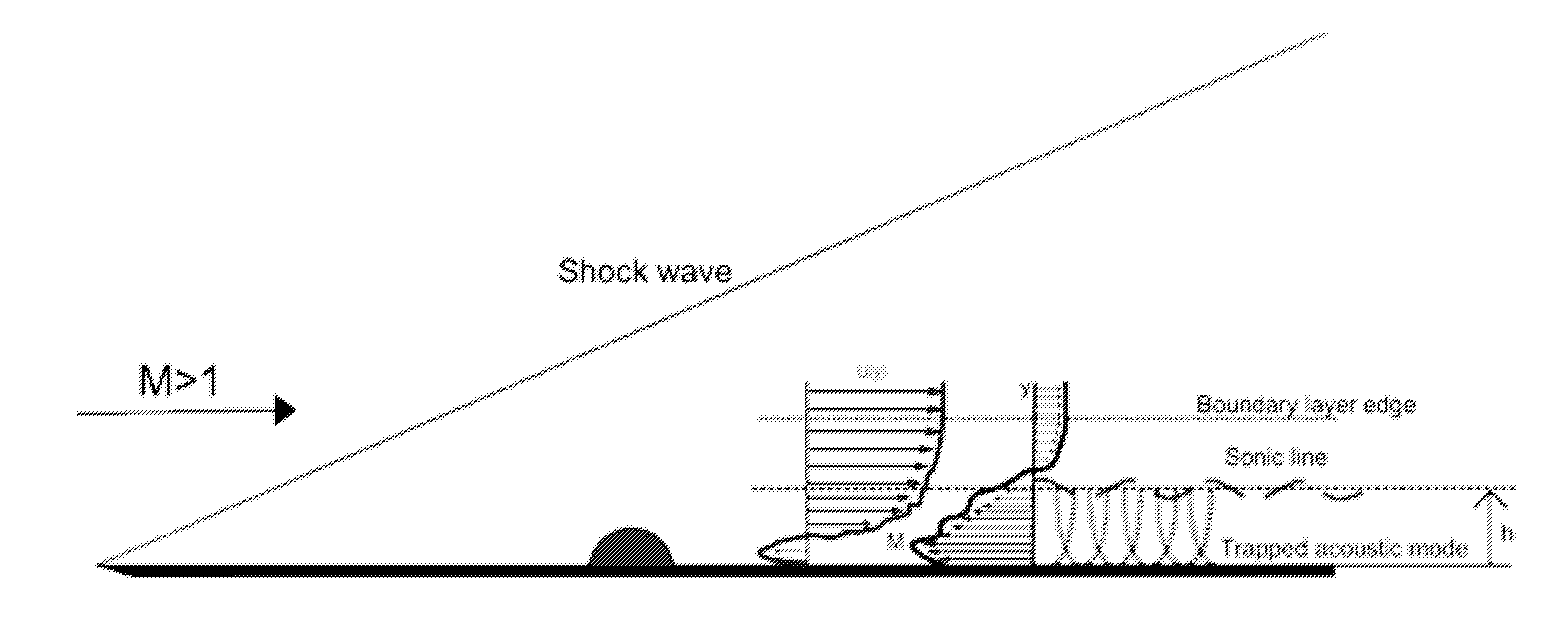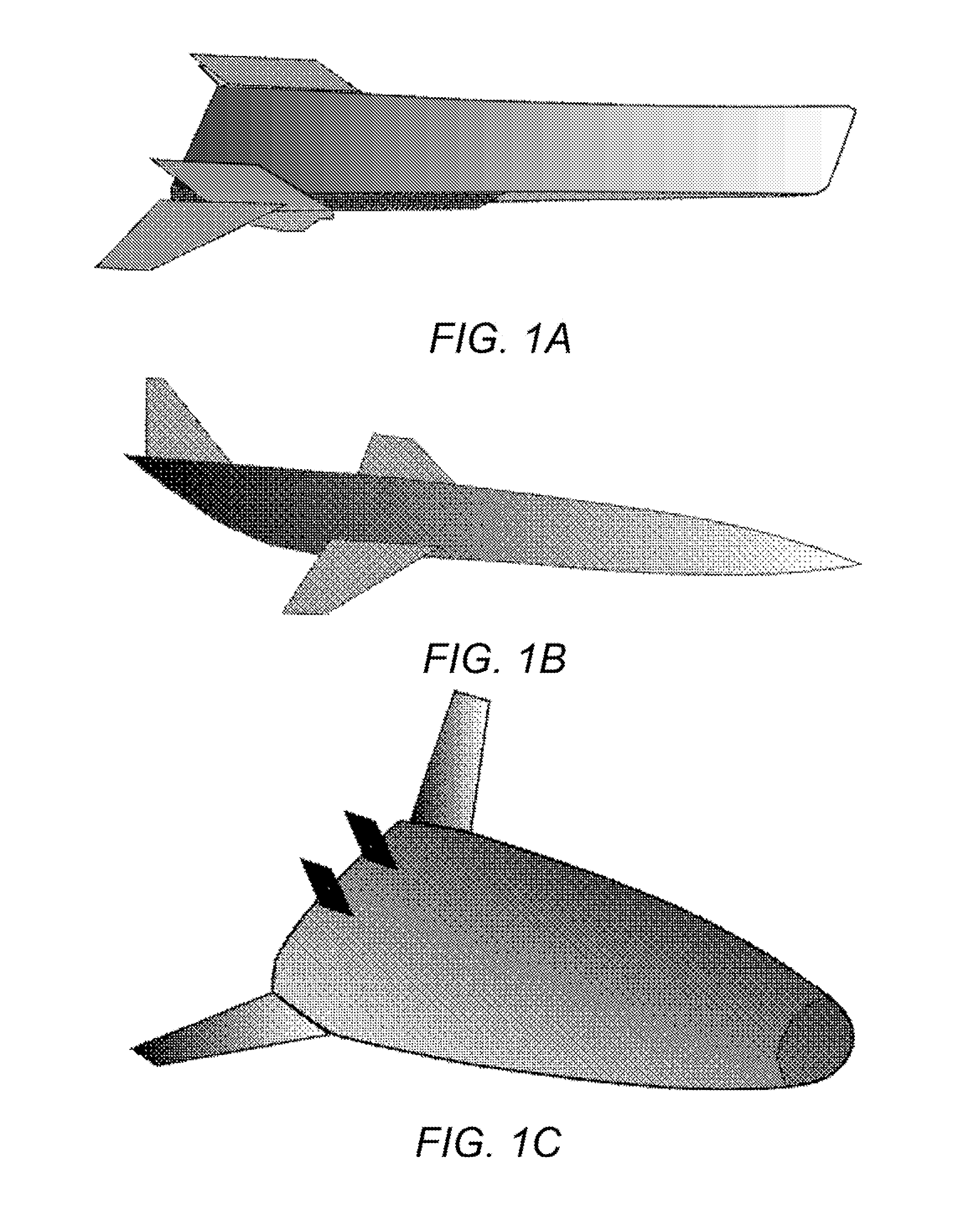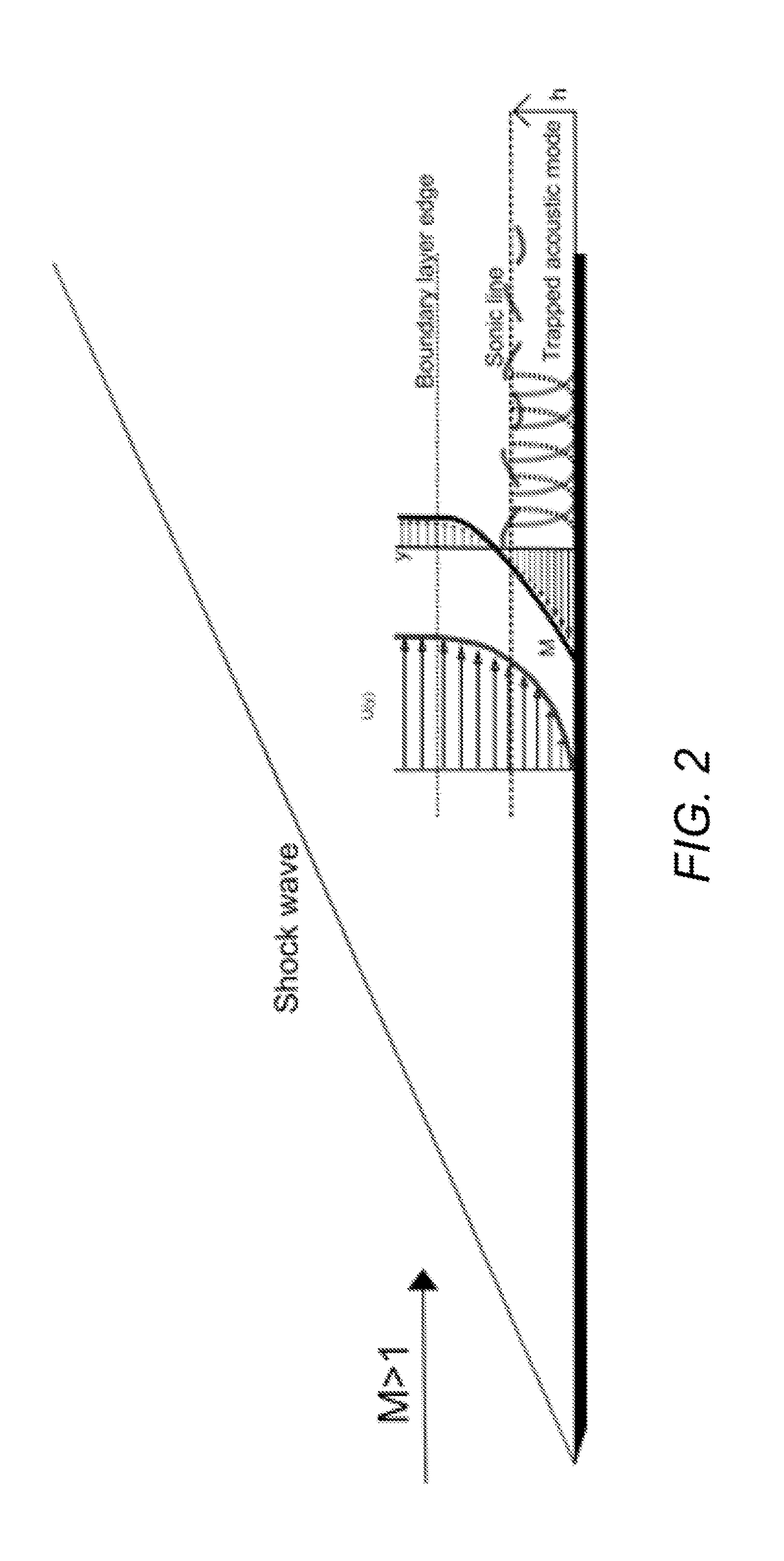Hypersonic laminar flow control
a technology of laminar flow and hypersonic, applied in the direction of air flow influencers, mechanical devices, transportation and packaging, etc., can solve the problems of reducing the total drag of the vehicle, not using laminar flow control methods, and reducing the drag at the base of the vehicl
- Summary
- Abstract
- Description
- Claims
- Application Information
AI Technical Summary
Benefits of technology
Problems solved by technology
Method used
Image
Examples
Embodiment Construction
[0043]1. Overview
[0044]The present application discloses a novel passive control strategy for laminar flows over air transportation vehicles and space reentry vehicles flying at high supersonic and hypersonic speeds by using surface roughness to maintain laminar flow by delaying the laminar-turbulent transition. (As used in the present application, applicable flow speed may simply be referenced as “supersonic” which will be understood to include hypersonic speeds, i.e. above Mach 5.) The strategy is focused on flow transition caused by the so called second mode instability. It can be applied to supersonic and hypersonic airplanes and space reentry vehicles. The technique of using such surface roughness elements to stabilize hypersonic boundary layers has not been previously described.
[0045]The control of laminar flow can be achieved by applying an array of surface roughness elements in the region before the laminar-turbulent transition. The control of laminar flows is achieved by ap...
PUM
 Login to View More
Login to View More Abstract
Description
Claims
Application Information
 Login to View More
Login to View More - R&D
- Intellectual Property
- Life Sciences
- Materials
- Tech Scout
- Unparalleled Data Quality
- Higher Quality Content
- 60% Fewer Hallucinations
Browse by: Latest US Patents, China's latest patents, Technical Efficacy Thesaurus, Application Domain, Technology Topic, Popular Technical Reports.
© 2025 PatSnap. All rights reserved.Legal|Privacy policy|Modern Slavery Act Transparency Statement|Sitemap|About US| Contact US: help@patsnap.com



